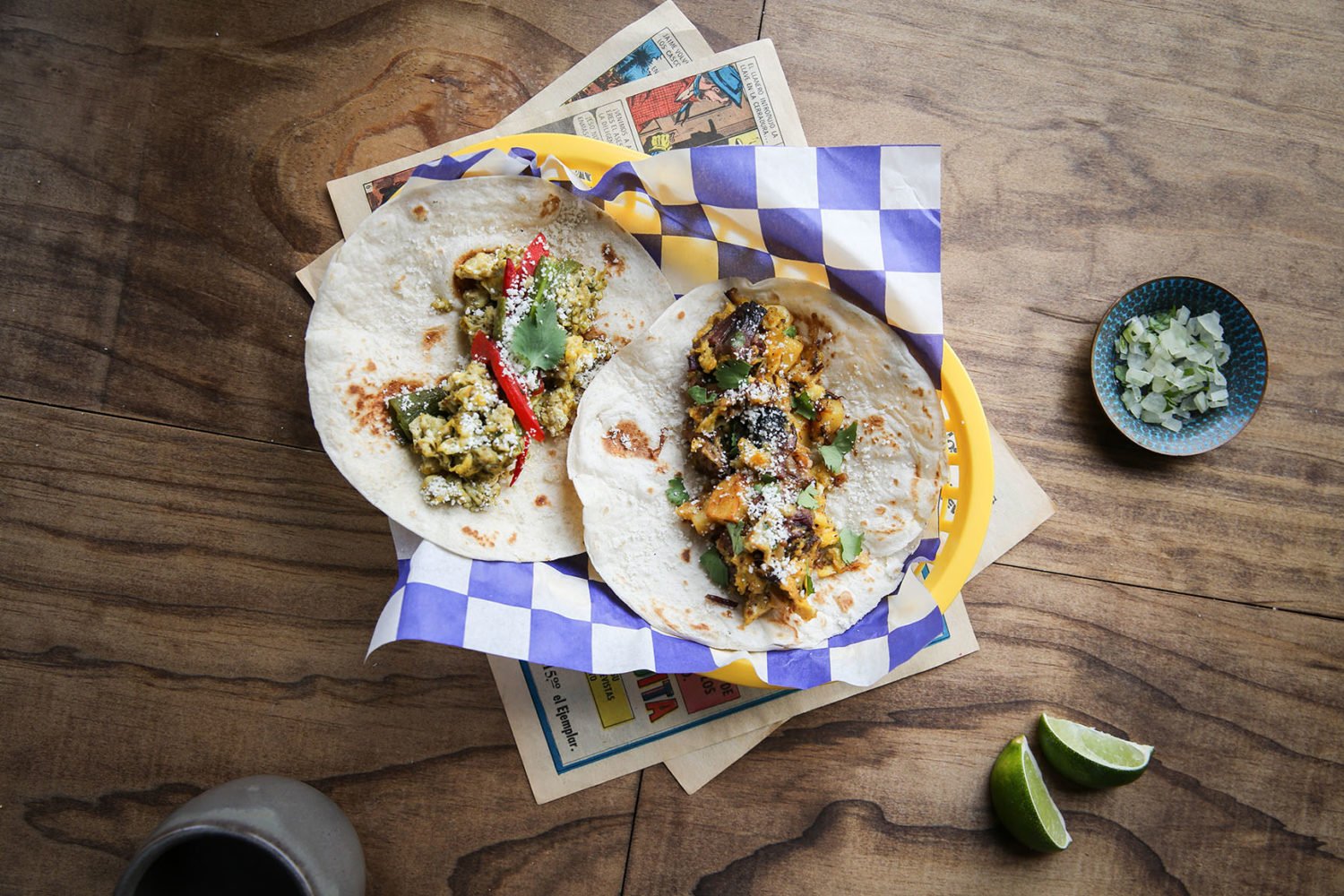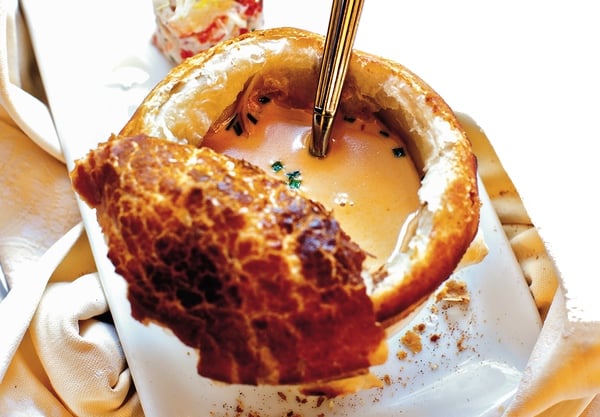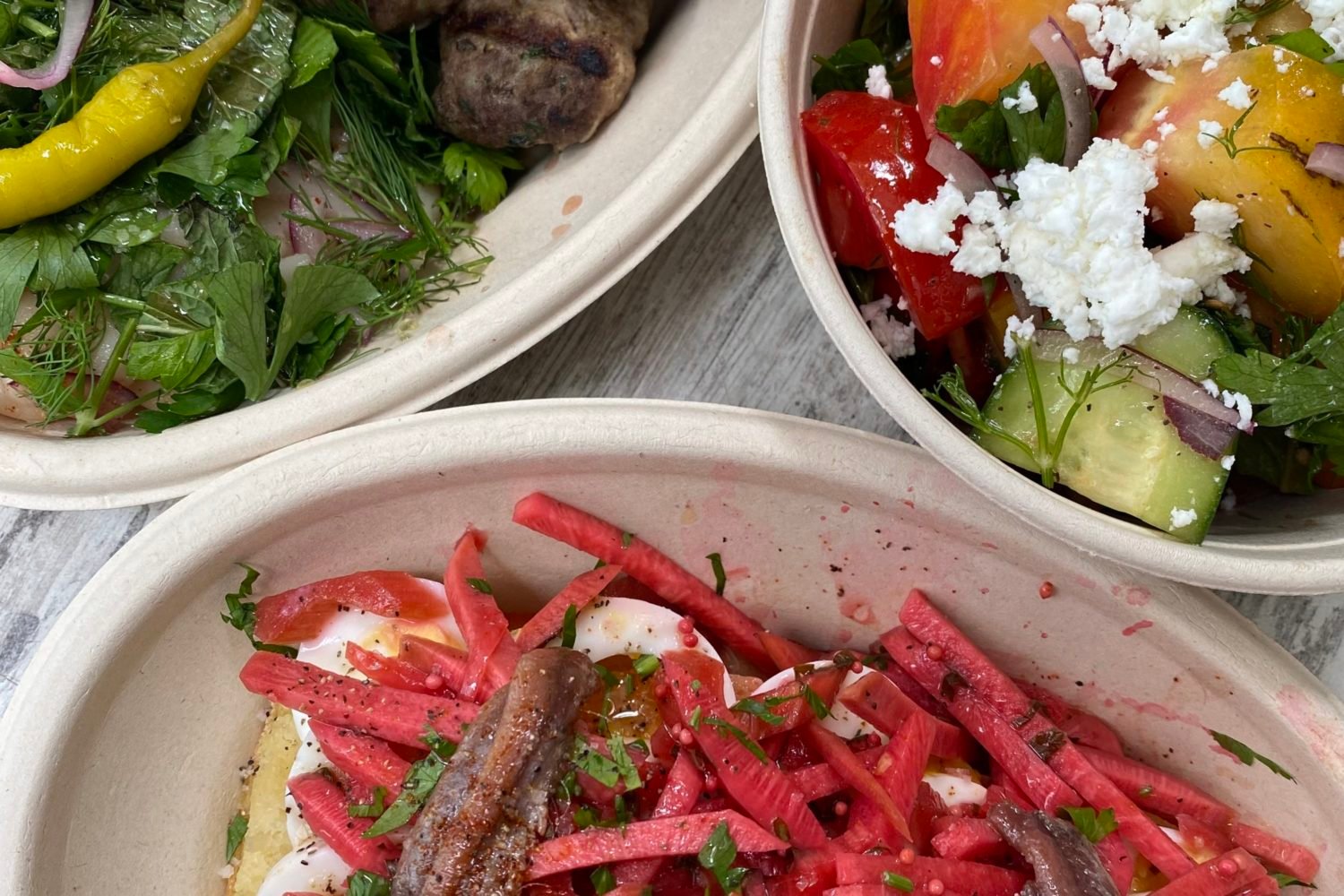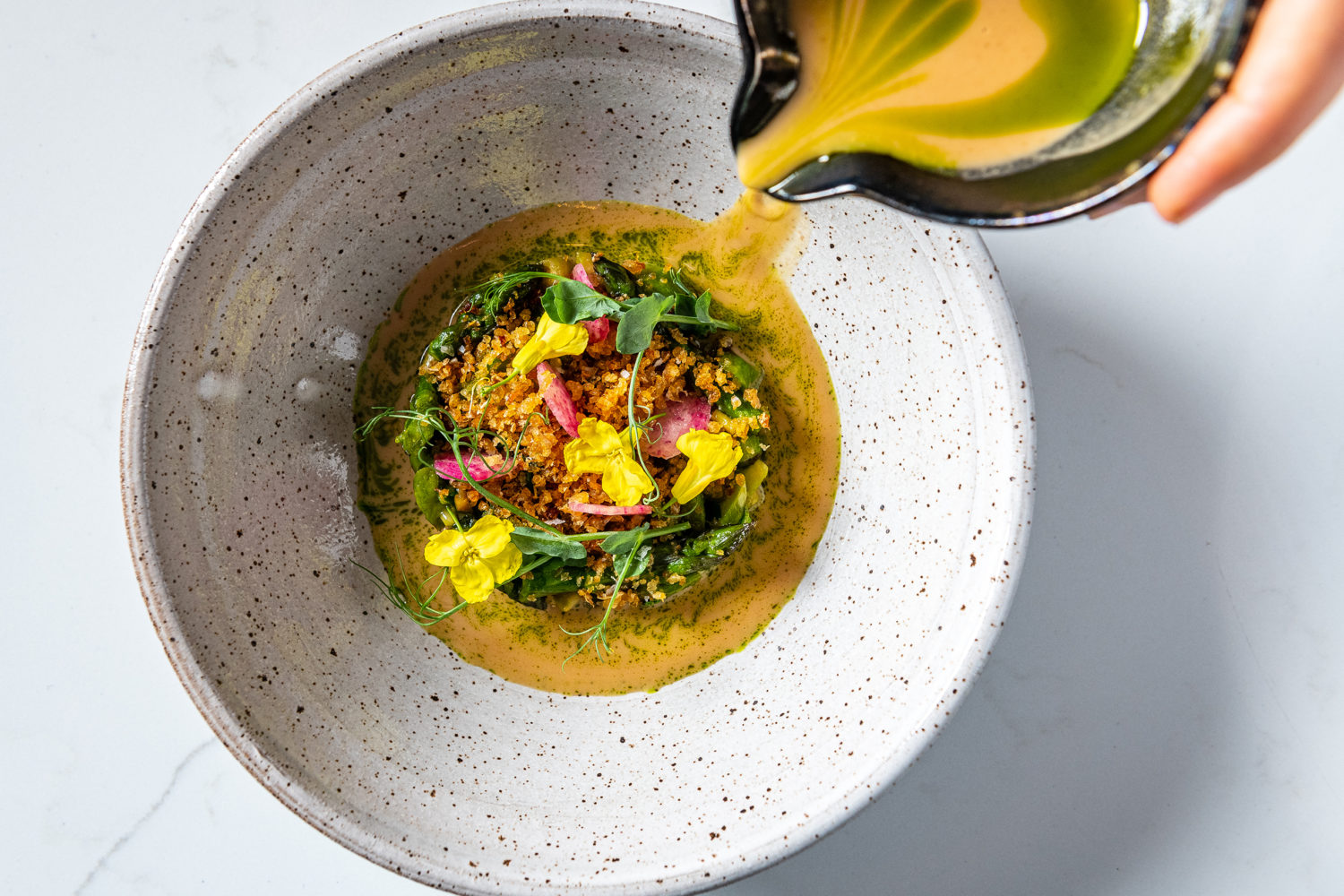From December 2001
While most of Washington's best restaurants are owned by chefs, entrepreneur Ashok Bajaj has built his successful group of upscale eateries by dint of a welcoming personality and an emphasis on scrupulous service, leaving the cooking to hired hands. His flagship Bombay Club was a favorite of the Clinton administration—not only did the President dine there more than once, but daughter Chelsea, a strict vegetarian, returned with friends to enjoy the kitchen’s meatless offerings. The rest of Bajaj’s establishments offer Modern American cooking. From 701 on Pennsylvania Avenue to Ardeo on Cleveland Park’s lively restaurant row, all are popular despite lukewarm reviews from the critics.
When it opened in 1994, the Oval Room was more memorable for the whimsical mural spanning its curved back wall—a fantasy of Washington couples that paired Henry Kissinger and Elizabeth Taylor, Lyndon Johnson and Grace Kelly, and Frank Sinatra dancing with Nancy Reagan—than for its cuisine. Since then, its kitchen has been a revolving door for chefs, with as many as two changes in a single year.
Late last summer, Bajaj transformed the Oval Room’s playful parody of a Federal-period setting into a pair of sleek, modern dining rooms separated by a narrow, elegant bar. Gone is the mural, replaced by a pastel-yellow expanse accented with small abstract paintings.
To direct the kitchen, Bajaj has lured Frank Morales here from Manhattan’s well-regarded Union Pacific. Chef Morales’s menu surprises with its moderate prices and is refreshing in the absence of dishes borrowed from the local Modern American repertory. What is troubling is Morales’s penchant for sweetness in his appetizers and main courses.
A butternut-squash soup topped with a fluff of curry-flavored whipped cream was so syrupy that it might be reconsidered as a novel sauce for a dessert. The corn soup, textured with kernels sliced off the cob and garnished with a small scoop of backfin crab made unpleasant by the addition of a dice of raw red bell pepper, was frothy and unnaturally sweet. Vidalia-onion soup, prettily garnished with a flaky little pastry box containing English peas and Smithfield ham, was a light-bodied essence of Vidalias, beautifully complemented by the salt and smoke of the Smithfield ham.
The fruity sweetness of its sauce and a garnish of julienne cantaloupe that dressed the “schnitzeled” shrimp—have we come to the point that chefs are forced to invent names for crumb-coated fried foods to get diners to order them?—failed to mask the ammonia flavor that pervaded the dish’s crustaceans. A “napoleon” of crab, layered between thick slices of room-temperature fried plantain, was dull. The best of the first courses sampled was a dish of splendidly light ricotta dumplings and baby vegetables awash in a light broth fragrant with sherry and black truffles.
Among the main courses, chef Morales’s seared sea scallops are beautifully cooked, their caramelized exteriors and firm interiors distinguishing them from the semi-sushi scallops served at too many Modern American restaurants here. The shellfish were presented atop a small pad of short-grained rice garnished with thinly sliced rings of squid, a few triangles of chorizo, and a scattering of English peas. Had chef Morales stopped there, the result would have been a delicious composition of perfectly cooked fresh scallops complemented by a creamy mini paella. Unfortunately, he chose to surround the rice with a moat of “paprika jus,” a sauce that tasted like a distillate of Spanish sausage seasonings and overwhelmed the rest of the ingredients with its intensity.
By contrast, a plate of impressive-looking giant prawns was overcooked. But even if they had been cooked to a proper firmness, the combination of cabbage, green tomato, and cilantro that garnished and coated them would have produced a jumble of flavors.
Cabbage reappeared as a steamy ragoût mixed with shredded duck confit and topped with slices of duck breast. The duck breast was inedibly chewy, and the orange broth that sauced the dish was complementary to the duck but a detriment to the cabbage.
The sparest of chef Morales’s main courses, roast loin of pork served over a couple of spoonfuls of puréed celery root, surrounded with braised root vegetables and topped with a julienne of fresh purple plums, was his most successful.
Except at steakhouses, a cheese assortment has become a fixture on the menus of Washington’s upscale restaurants. While some competitors may offer a greater breadth of selection or more exotic cheeses, not one matches the Oval Room for the beauty of its presentation: Arrayed on a large square of white porcelain with the formal precision of a sushi assortment are tiny batons of quince jelly, a fresh grape leaf, a small bunch of miniature purple grapes, and portions of two varieties of Coach Farms goat cheeses, a wedge of manchego from Spain, and Camembert warmed in a wrapping of phyllo pastry. Even if you have run out of wine by the time you have finished your main course, this is a cheese plate that warrants ordering a half bottle.
The Oval Room’s wine list, with its parade of familiar names, is uninspired, but it thoughtfully includes a fair selection of half bottles to accommodate single diners and couples who have chosen main courses suited to either a red or a white and don’t want to compromise.
Among the desserts, one sure to be controversial is innocently listed as Braised Pineapple Crepes With Green Cardamom Ice Cream and Pomegranate Sauce. Instead of the hanky-thin pancakes expected, the “crepes” turn out to be thin slices of cooked potato, which tend to dull the natural sweetness of their topping of diced pineapple. The pomegranate sauce lends a discordant note. Fortunately, the kitchen honors the classic model with its pear charlotte, its gentle natural sweetness perfectly complemented by a créme anglaise subtly flavored with cloves.
The new Oval Room is a winningly elegant restaurant striving to compete in a crowded field of talented Modern American kitchens: At its neighbor Equinox, Todd Gray’s cooking grows more impressive with every season, and such well-established restaurants as Kinkead’s, Vidalia, and Cashion’s Eat Place set the local standard for Modern American cooking. Once chef Morales gets a chance to familiarize himself with local products and their purveyors, there is a good chance that his cuisine will rise to match the high standards of excellent service that are a hallmark of Ashok Bajaj’s restaurants.













